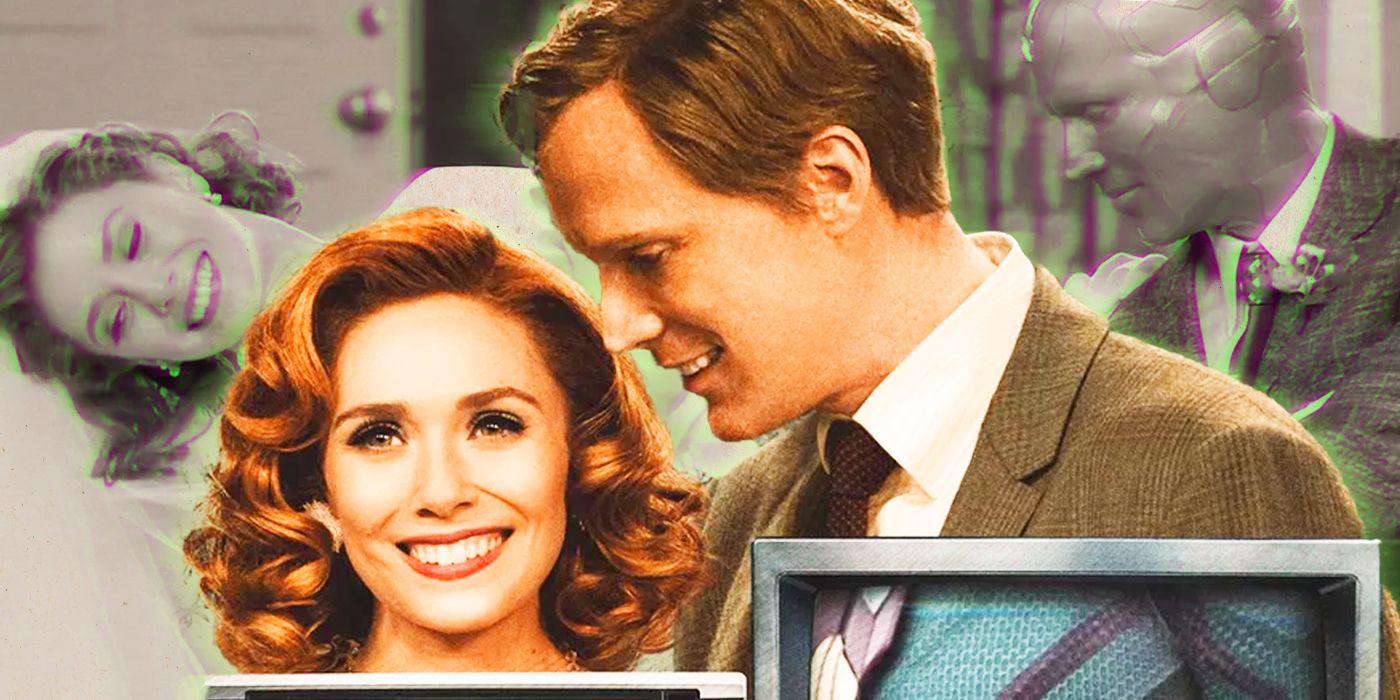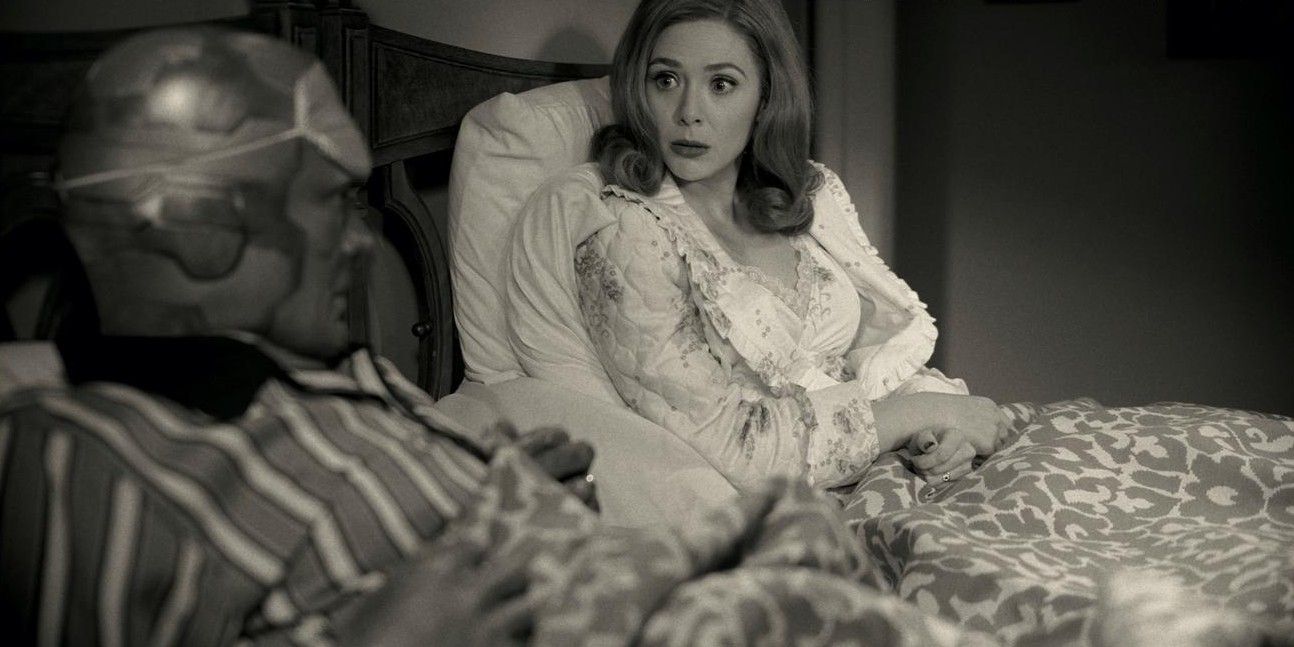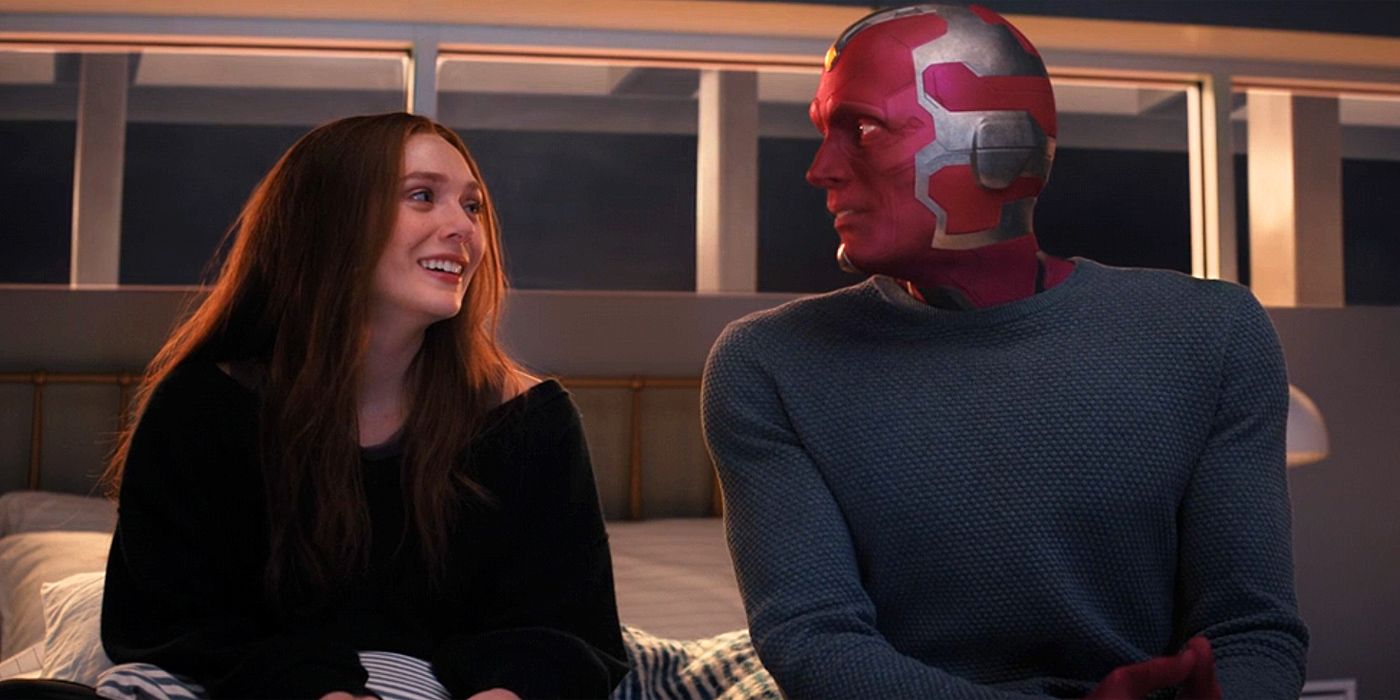Early on, fans weren't sure what to make of WandaVision's central conceit: that the series was, as Kevin Feige put it, subverting rather than parodying American family television. Wanda's magical romp through TV history turned out to be a source of humor and, as we saw in the show's eighth episode "Previously On," a plot device that connects the Marvel Cinematic Universe's past and future endeavors. With all the references, theorizing and franchising, it's easy to overlook how revolutionary WandaVision is thematically. Whether producers intended it to or not, the show's rapid progression from the 1950s to the present charts the societal expectations of women as they've changed through the decades.
In the series' first two episodes, Wanda is the picture-perfect wife. She's overdressed for her role as a homemaker and not a hair's out of place. In temperament, she ranges from accommodating June Cleaver to goofy Lucy Ricardo. But she's definitely the sidekick to Vision's happy husband, and she's not yet fully aware of the nature of her surreality or the true scope of her power. These episodes, in black and white, mirror the limited role women were able to play in '50s and '60s society. Her obliviousness could also be interpreted as commentary on the state of women's mental health at the time. Many housewives maintained a flawless exterior while feeling intense pressure and meaninglessness on the inside, and the prescription of tranquilizers was sometimes the solution.
Wanda first breaks character in the series' 1970s-set third episode, "Now in Color," after the birth of her twins. That episode satirizes the still-popular book, What to Expect When You're Expecting, as well as every labor and delivery scene in TV and movies that plays out according to the predictable but unrealistic beats of contractions, water breaking and not enough time to get to the hospital. Wanda clearly wants children, but the presence of the bumbling doctor and the jokes about fruit symbolize how American society talked down to women and didn't trust them to be in control of their own bodies in the '70s, though these issues are far from resolved.
Over the course of Episodes 5, 6 and 7, WandaVision's final three TV-themed episodes, which copy '80s, '90s, and early 2000s-style comedies, Wanda grows increasingly overburdened and overwhelmed as more and more problems and responsibilities are foisted upon her. Pandemic-era moms will recognize this character. She's an accumulation of all of the previous expectations, plus all the new ones, with no relief in sight. Modern women may feel more comfortable speaking up about harassment, but they still deal with an absolutely crushing amount of anxiety about their appearance, their relationships, their parenting, their work. Basically, Wanda has to worry about doing everything "right" -- including wielding magic and processing grief -- in a way that has not troubled male superheroes quite so much.
Wanda now understands, but doesn't really want to think about, the fact that she's the operating force behind the Westview anomaly, and after Agatha took her on a tour of her formative moments in Episode 8, she seems to grasp that it's all the result of her cumulative trauma. As was the case in Lagos in Captain America: Civil War, she can't bear that her actions have negatively affected innocent people. However, she also senses that at least some of the "good guys" view her -- and more specifically, the power of her emotions -- as at best a problem and at worst a serious threat that needs to be contained.
Women have long fought against the sexist assumption that they're too emotional to be given unchecked power. Wanda's abilities (for now) appear to be instinctive and tied to her emotions, as opposed to Agatha's methodically researched and practiced brand of magic. And, as we saw in Avengers: Age of Ultron and in the citizens of Westview, she also has the power to manipulate the thoughts and feelings of others. Often, this attribute is assigned to female characters who have the potential to be both hero and villain, like the X-Men's Jean Grey. The metaphor is that the world is still afraid of self-actualized, powerful women -- no matter which way they break.
When Wanda interacted with the Mind Stone in Episode 8 and saw a golden figure with Scarlet Witch's silhouette, it foreshadowed who she would become... not just the Scarlet Witch, but the fully empowered version of herself, having persevered. Whatever else Marvel Studios makes of Wanda from this point on, they've depicted her as a multi-dimensional whole person and made us empathize with her. For a franchise full of muscles, weapons and explosions, that subtle feminist message is no small thing.
Written by Jac Schaeffer and directed by Matt Shakman, WandaVision stars Elizabeth Olsen as Wanda Maximoff/Scarlet Witch, Paul Bettany as Vision, Randall Park as Agent Jimmy Woo, Kat Dennings as Darcy Lewis, Teyonah Parris as Monica Rambeau and Kathryn Hahn as Agnes. The series is available to stream on Disney+.



